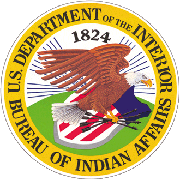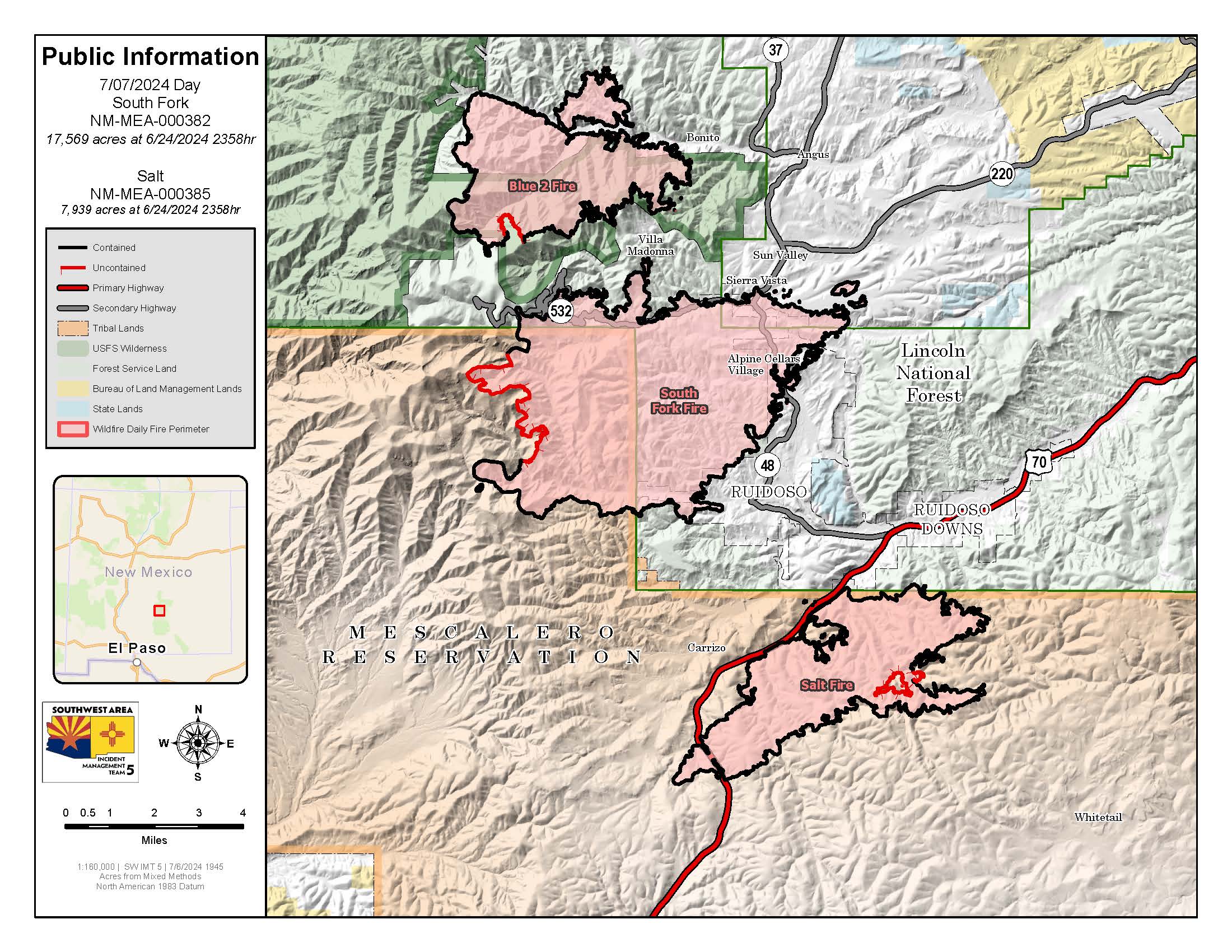Originating on the Mescalero Apache Reservation, the South Fork and Salt fires started on Monday, June 17, 2024. The South Fork Fire was reported at 9:07 A.M. MDT and the Salt Fire was reported at 2:00 P.M. MDT. The South Fork Fire, threatening the community of Ruidoso, New Mexico, reached 15,000 acres within 24 hours and as of 3:00 P.M. on Tuesday, June 18, is under evacuation orders. Both fires are burning timber and mixed conifer threatening the community of Ruidoso, NM. The Bureau of Indian Affairs (BIA) Mescalero Agency responded immediately with local wildland firefighters from across multiple agencies and jurisdictions, exercising full suppression response.
| Current as of | Mon, 07/15/2024 - 13:55 |
|---|---|
| Incident Time Zone | America/Denver |
| Incident Type | Wildfire |
| Cause | Lightning / Natural |
| Date of Origin | |
| Location | Ruidoso, NM area |
| Incident Commander | Southwest Area Team 5, led by Incident Commander Dave Gesser, assumed command of the South Fork and Salt fires at 6:00AM, Wednesday, June 19, 2024. |
| Incident Description | The South Fork Fire is at 17,569 acres, 99% containment The Salt Fire is at 7,939 acres, 99% containment Both fires are located in the vicinity of: Ruidoso, NM |
| Coordinates |
33° 22' 16'' Latitude
-105° 45' 58
'' Longitude
|
| Size | 17,569 Acres |
|---|---|
| Percent of Perimeter Contained | 99% |
| Estimated Containment Date | 07/15/2024 |
| Fuels Involved | Brush, Hardwood Litter and Timber. |
| Remarks |
Command of the South Fork and Salt Fires transferred to the local unit at 1800 on Sunday, 7/07/24. Both fires are under final suppression repair. A South Fork Fire Emergency Closure Order was issued on 6/20/2024 for national forest lands within the Smokey Bear Ranger District. The identified areas, and roads and trails therein, are closed to public access to provide enhanced safety of firefighting personnel and the public. The Lincoln National Forest has also implemented forest-wide Stage II fire restrictions. For more information, visit https://www.fs.usda.gov/lincoln. |
|---|

 InciWeb
InciWeb
